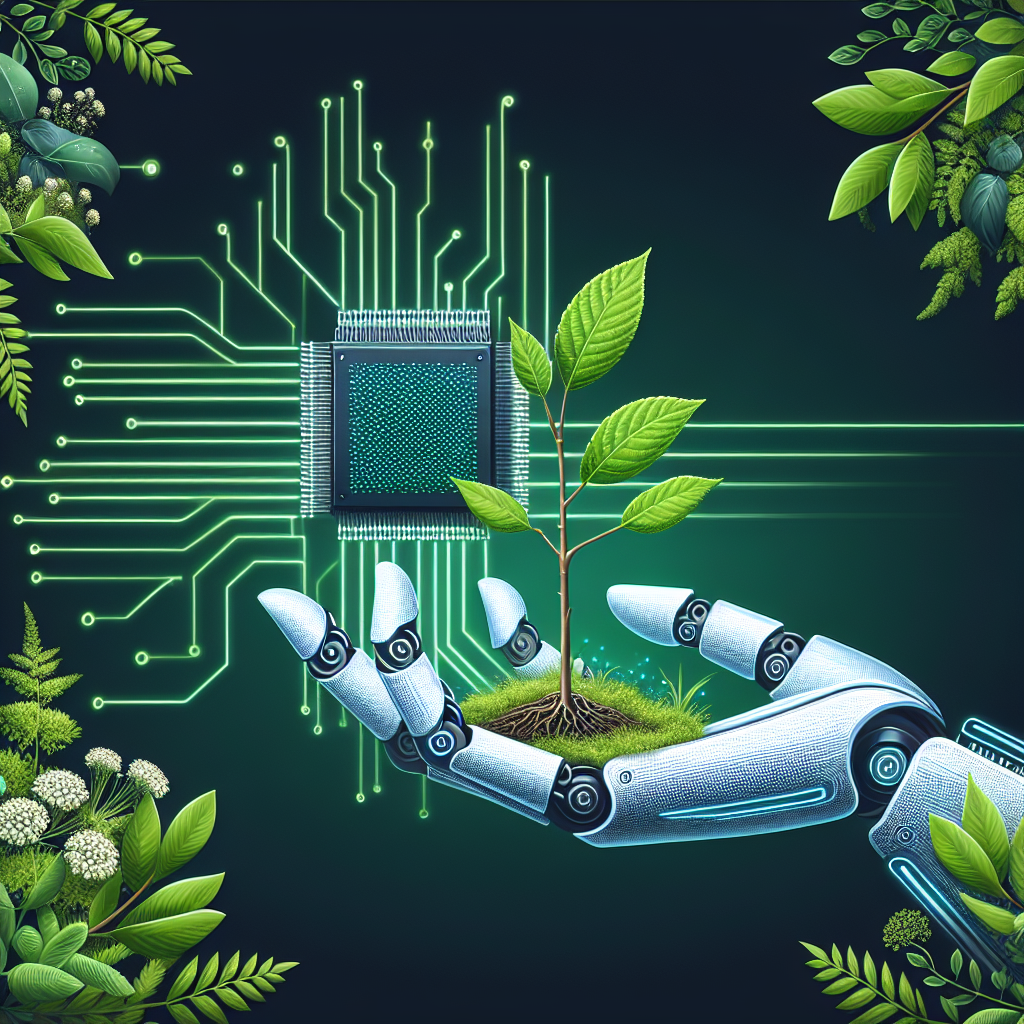In recent years, there has been a growing awareness of the impact of human activities on the environment. From deforestation to pollution, our planet is facing numerous challenges that threaten the delicate balance of ecosystems. In order to address these issues and protect our planet for future generations, it is essential to leverage the power of technology, specifically artificial intelligence (AI), for environmental protection and conservation.
AI has the potential to revolutionize the way we approach environmental conservation. By harnessing the power of AI, we can better understand and monitor the health of our planet, as well as develop innovative solutions to mitigate environmental damage. From tracking wildlife populations to predicting natural disasters, AI has the potential to play a crucial role in preserving our environment.
One of the key ways in which AI can be used for environmental protection is through the monitoring and analysis of environmental data. With the help of AI algorithms, we can process large volumes of data from satellites, sensors, and other sources to gain valuable insights into environmental trends and patterns. This data can help us identify areas of concern, such as deforestation or pollution, and take proactive measures to address these issues.
For example, AI can be used to monitor deforestation in real-time by analyzing satellite imagery and identifying areas where illegal logging is taking place. By detecting deforestation early on, we can take immediate action to stop the destruction of forests and protect biodiversity. Similarly, AI can be used to track wildlife populations and identify areas where conservation efforts are needed to protect endangered species.
In addition to monitoring environmental data, AI can also be used to develop innovative solutions to environmental challenges. For example, AI can be used to optimize the placement of renewable energy sources, such as solar panels and wind turbines, to maximize energy production and minimize environmental impact. AI can also be used to develop predictive models for natural disasters, such as hurricanes and wildfires, to help communities prepare and respond more effectively to these events.
Overall, AI has the potential to revolutionize environmental protection and conservation by providing us with the tools and insights we need to make informed decisions and take proactive measures to protect our planet. By leveraging the power of AI, we can work towards a more sustainable future for all living beings.
FAQs:
1. How can AI help protect endangered species?
AI can help protect endangered species by tracking wildlife populations, identifying areas where conservation efforts are needed, and monitoring illegal poaching and trafficking activities. By using AI algorithms to analyze data from sensors, drones, and other sources, we can gain valuable insights into the behavior and habitat of endangered species, as well as develop strategies to protect them from threats.
2. Can AI help prevent deforestation?
Yes, AI can help prevent deforestation by monitoring forests in real-time, analyzing satellite imagery to detect illegal logging activities, and identifying areas where conservation efforts are needed. By using AI algorithms to process large volumes of data from satellites and sensors, we can track deforestation trends and take proactive measures to stop the destruction of forests.
3. How can AI be used to address climate change?
AI can be used to address climate change by optimizing the placement of renewable energy sources, developing predictive models for natural disasters, and analyzing data to identify opportunities for reducing greenhouse gas emissions. By leveraging the power of AI, we can develop innovative solutions to mitigate the impacts of climate change and transition to a more sustainable energy system.
4. What are the challenges of using AI for environmental protection?
One of the main challenges of using AI for environmental protection is the need for accurate and reliable data. In order for AI algorithms to provide meaningful insights, they require high-quality data from sensors, satellites, and other sources. Additionally, there are concerns about the ethical implications of using AI for environmental monitoring, such as privacy issues and data security.
5. How can individuals contribute to environmental protection using AI?
Individuals can contribute to environmental protection using AI by supporting organizations and initiatives that are using AI for conservation efforts, advocating for policies that promote the use of AI for environmental monitoring, and educating themselves about the potential of AI to address environmental challenges. By raising awareness and taking action, individuals can help harness the power of AI for environmental protection and conservation.

